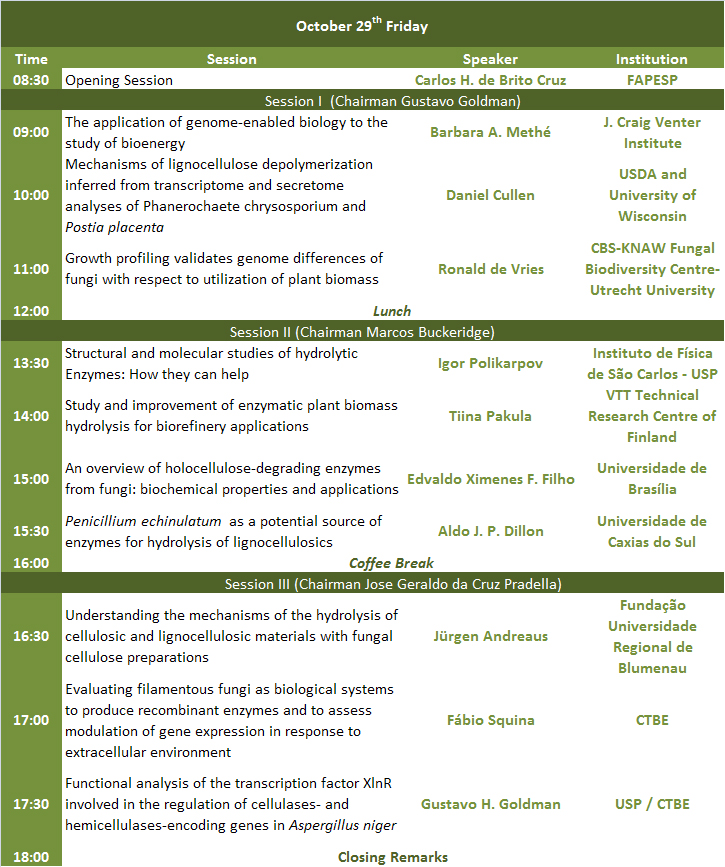
Date: October 29th , 2010.
Place: CTBE Auditorium, Campinas, Brazil.
Presentation: Brazil is currently responsible for about 33% of the bioethanol produced worldwide. Sugarcane bagasse contains one-third of the energy in this plant, and is the source of all of the energy needed in the ethanol mills. The other two thirds are split between sucrose and the tops and leaves. If sugarcane trashes were collected and used for bioethanol production, this could generate an additional 3,700 – 4,000 l/ha bioethanol, thus reducing the land use requirement by a total of 33-38%. The development of new and efficient technologies for hydrolysis of sugarcane bagasse could improve considerably the energetic balance and create the basis for a second generation of ethanol.
In this context, the “Workshop on Second Generation Bioethanol: enzymatic hydrolysis by fungi” will be to promote this research area in Brazil. In addition, will strength partnerships between the scientific community and the Brazilian Bioethanol Science and Technology Laboratory (CTBE). The focus in this meeting will be genetic biochemistry, and molecular biology of the production of enzymes involved in the degradation of lignocelluloses by filamentous fungi.
Financial Support: CTBE/CNPEM and FAPESP
WORKSHOP PROGRAM

